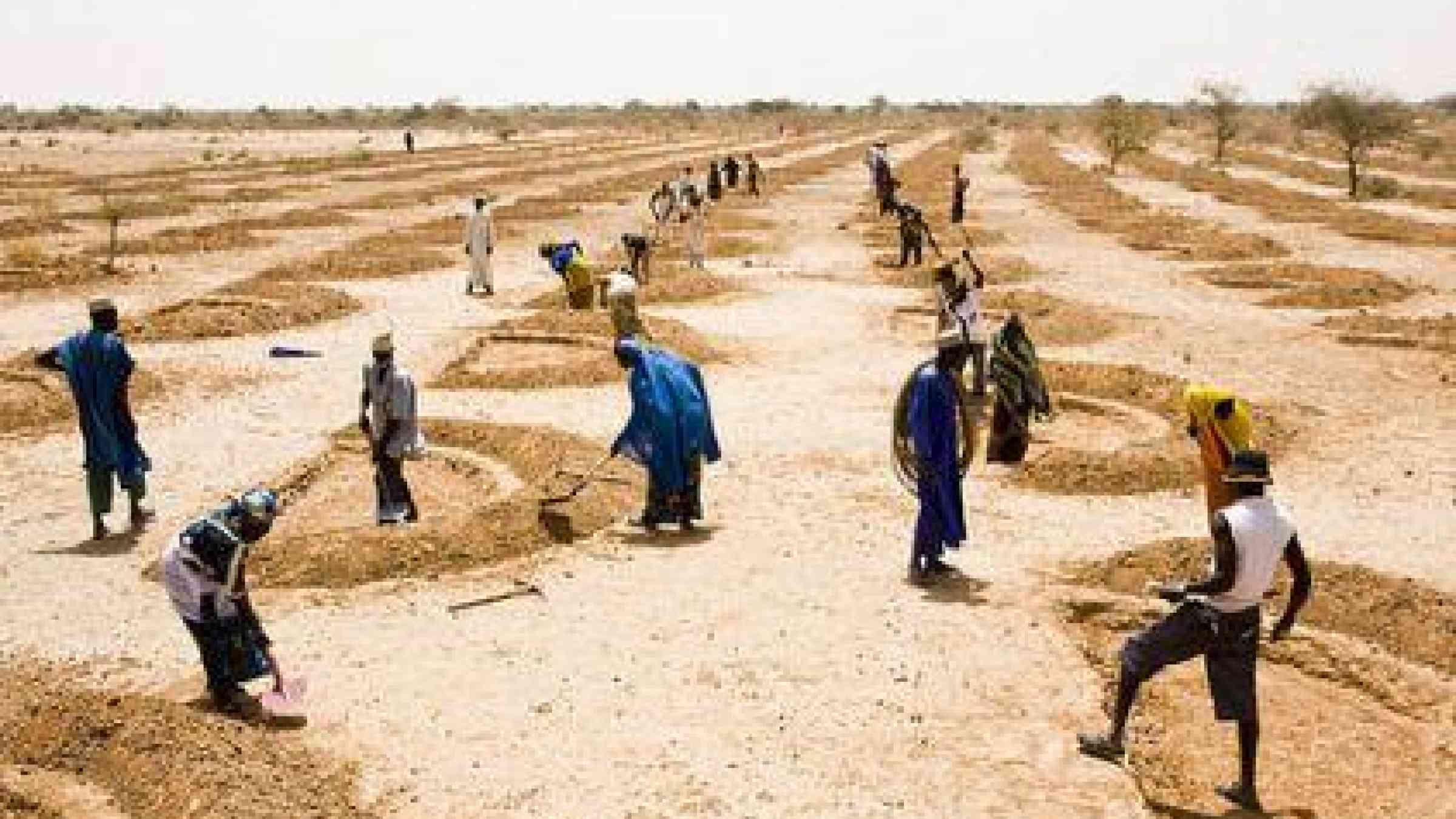Africa launches global Sendai Framework drive

Projects such as these rain water collection basins in Niger play a significant role in reducing the risk of disasters in a region hit frequently by drought (Photo: Flickr)
YAOUNDE, 20 July 2015 – Africa this week launches a global drive to apply the new Sendai Framework for Disaster Risk Reduction, a 15-year international roadmap that seeks to make the world safer from natural and man-made hazards.
The talks from Tuesday to Thursday in Cameroon’s capital Yaoundé bring together representatives from four dozen governments, Africa’s Regional Economic Communities, the African Union and a swath of UN and other international organizations.
While the goal is to align Africa’s existing programmes with the Sendai Framework, the gathering has wider implications, marking the first inter-governmental meeting to put the new pact into action since its adoption in March at the World Conference on Disaster Risk Reduction.
“Africa has a chance to set the tone for the global future of disaster risk reduction,” said Margareta Wahlström, Special Representative of the UN Secretary-General for Disaster Risk Reduction.
Underlining the session’s importance, it has two parts. The 7th Africa Working Group Meeting on Disaster Risk Reduction on Tuesday and Wednesday will be followed on Thursday by the 4th High Level Meeting on Disaster Risk Reduction, drawing ministers and other senior officials. The latter is due to issue a declaration calling on the African Union to steer a continent-wide Sendai Framework alignment, and for regional and national plans to likewise match the new agreement.
The Sendai Framework has four priorities: improving risk governance, understanding disaster risk, investing in resilience and enhancing preparedness for effective response, recovery, rehabilitation and reconstruction.
Its impact up to 2030 and beyond will hinge on meeting seven global targets, including substantial reductions in disaster mortality, numbers of people affected, economic losses and damage to critical infrastructure.
Natural and man-made hazards mesh together to claim lives, ruin livelihoods and undermine development. Integrating disaster risk reduction into all areas of policy and planning is therefore central for sustainable development. Targeted action is required to tackle underlying risk drivers such as poverty, climate change, unplanned urbanization, population growth, poor land management, decimation of ecosystems, and weak governance and policies.
Data gathered over the last two decades show that in terms of absolute numbers affected by disasters, Africa has two countries in an otherwise-Asian top ten: Kenya and Ethiopia. When the figures are standardized per 100,000 of population, the picture is starker: Eritrea, Lesotho, Zimbabwe, Somalia, Kenya and Niger emerge as the worst-affected.
Direct economic losses from disasters so far this century are estimated to have reached US$2.5 trillion globally. Losses in 40 low- and middle-income countries amounted to US$305 billion over the last 30 years. In Africa alone, from 1990 to 2012, an average of 152 disasters were recorded per year, the majority triggered by hydro-meteorological hazards such as floods and storms. In 2014, over 6.8 million Africans were affected directly by a total of 114 recorded disasters.
Like the rest of the continent, meeting host Cameroon knows plenty about natural hazards, whether volcanic eruptions, earthquakes, landslides, desertification, epidemics and flooding. It has also seen one of Africa's most unusual disasters, in 1987, when Lake Nyos exploded and emitted a cloud of carbon dioxide, killing over 1,700 people and 3,500 livestock within minutes in a 25-kilometre radius.
Lake Nyos has since become a case-study of risk management: with the support of scientists from France, Cameroon installed pipes to slowly but surely release the gas, which occurs naturally in such crater lakes. A solar-powered early warning system monitors gas levels, giving people time to evacuate if needed.
This June, Cameroon’s economic hub in the port city of Douala, was battered by floods that killed at least four people and drove 80,000 from their homes. Experts blamed a combination of climate change, deforestation, breakneck population growth and unregulated housing construction in a swampy district where cheap land is a magnet for the urban poor despite the risk. The authorities have responded by ordering the demolition of informal settlements.
Cameroon has announced the launch of a new early warning network to give local authorities real-time meteorological and hydrological information.
The Yaoundé meeting will take stock of actions since the launch of an African Regional Strategy for Disaster Risk Reduction in 2004.
Africa boasts 38 National Platforms for Disaster Risk Reduction, a key instrument used worldwide to understand and curb risk, and central to the Hyogo Framework for Action, the Sendai Framework’s predecessor adopted in 2005. Countries have also held regular Regional Platforms, the fifth African edition of which was in May 2014 in Nigeria and created a common position to help craft the Sendai Framework.
Explore further
Also featured on
Is this page useful?
Yes No Report an issue on this pageThank you. If you have 2 minutes, we would benefit from additional feedback (link opens in a new window).